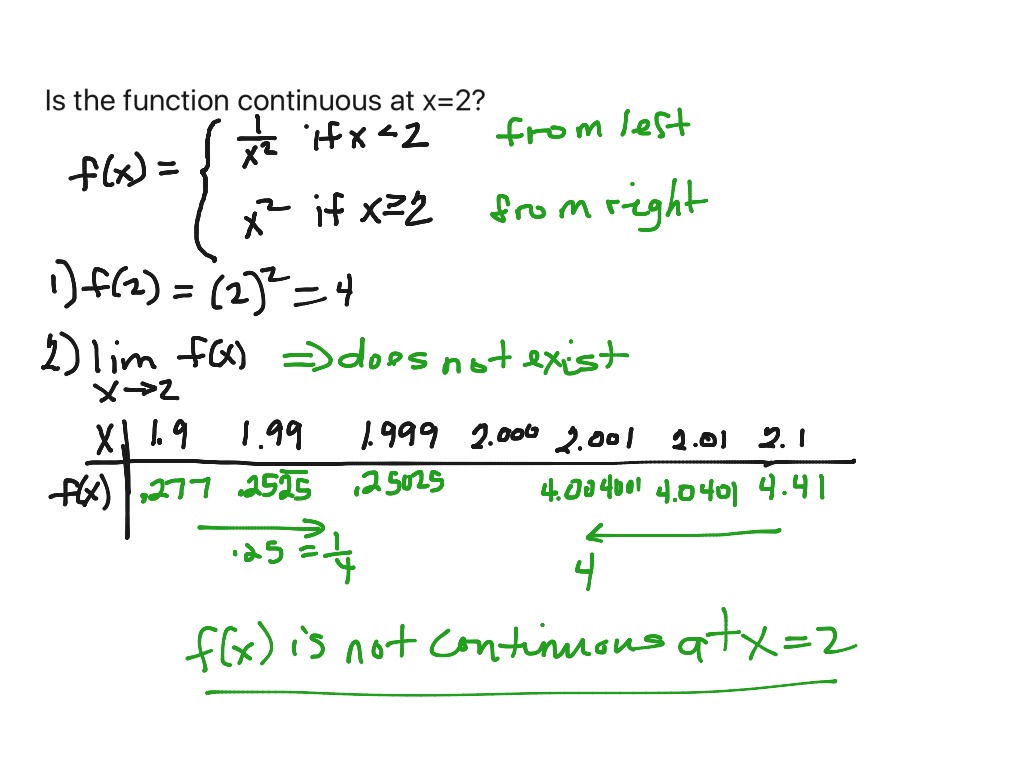

CONTINUITY CALCULUS HOW TO
How to prepare Limits, Continuity, and Differentiability: If g is continuous at a and f is continuous at g (a), then (fog) is continuous at a. exist and are equal but not equal to f (a)Ĭontinuity of composite function: Let f and g be real-valued functions such that (fog) is defined at a.Or, if the left-hand limit, right-hand limit and the value of the function at x = c exist and are equal to each other, i.e.,ĭiscontinuity: The function f will be discontinuous at x = a in any of the following cases : Let f be a real function on a subset of the real numbers and let c be a point in the domain of f. Limits of the polynomial: If f is a polynomial function, then exists and is given by Let f and g be two functions such that both exist. If the right and left hand limits coincide, we call the common value as the limit of f at x = a and denote it by. This value is called the right-hand limit of f at a. We say lim f(x) is the expected value of f at x = a given the values of f near to the This value is called the left-hand limit of f at a. We say lim f(x) is the expected value of f at x = a given the values of f near the x→a- left of a. We shall study the concept of limit of f at a point ‘a’ in I. Limits of function: Let f be a function defined in a domain which we take to be an interval, say, I. Overview of the Limit, Continuity, and Differentiability: Limits of polynomials and rational functions Limits of a function, properties of limits

Notes on Limit, Continuity, and Differentiability:

And obviously, the chapter itself will help you to score some marks in the exam as it gets about 10% weight in jee main. This chapter will give you a different approach of thinking to solve a problem in physics and in general in academic research which will make you more equipped to deal with the problem and hence confident.Ĥ. You will feel comfortable with the calculative problem of mechanics and electro physics in physics which involves the concept of this chapter.ģ. After studying this chapter you will find new tools of mathematics which you will be exploring, and maybe you will enjoy using it.Ģ. Overall this chapter will be larger than other chapters as it has three independent topics combined.Ĭrack JEE 2021 with JEE/NEET Online Preparation Program Start NowĪfter studying Limit, continuity, and differentiability:ġ. This chapter is highly calculative, so you need to do proper practice, you should solve an ample amount of questions and make sure you are good with calculations. It will be a new chapter for student and you will find it difficult to learn initially but with time once you understand the basic concept and do a proper amount of practice you will find it handy. In area finding problem we first see if the function is continuous or not, so in that way, it will provide some handy tool for various other types of problems and chapters. Every year you will get at max 2 - 4 questions in JEE Main and other exams, directly (as chapter weight in jee main is only 10%) but indirectly, this chapter is going to serve as building blocks for the entire calculus. So by being the basic topic for calculus, it becomes a very important topic to be understood, Questions of this chapter has lots of variation as the chapter itself has 3 independent topics so it becomes a large chapter too and hence provide variations in the type of questions, level of questions. In Mathematics, Limits continuity and differentiability act as a building block for the whole calculus.


 0 kommentar(er)
0 kommentar(er)
